There is something so satisfying about depictions of 19th-century letter exchanges. The paper appears thick and high quality, the letting is in cursive writing which is so rare these days, and of course, the wax seals they are often closed with. Communicating this way must have made each correspondence somewhat significant, more so than the dozens of emails and group texts that some of us send a day. I think it’s a tradition worth maintaining, at least between lovers or would-be sweethearts.
Wax seals were once a crucial part of a properly constructed letter. They served to prove privacy and author. They were also sturdy, beautifully constructed trinkets, many of which have survived. Let’s take a look!
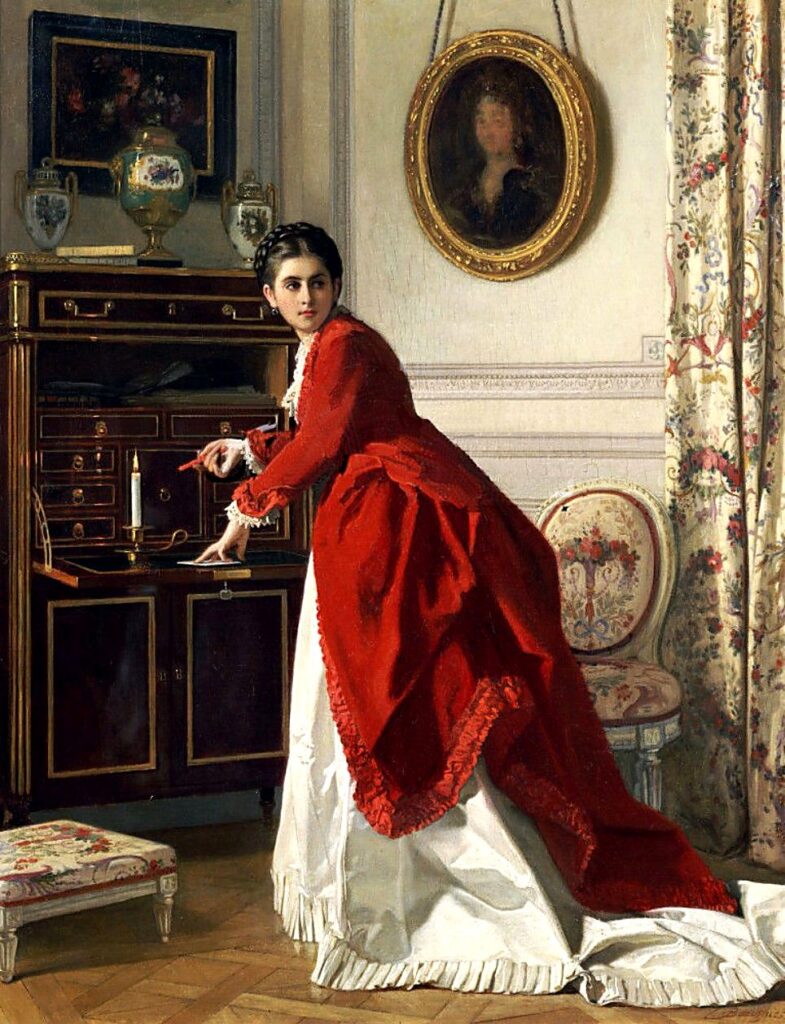
1870
An ancient art
I was a bit surprised to find out that seals as a form of identification in correspondence pre-date paper itself. Says Vintage Compact Shop:
“Seals have been used since ancient times to seal goods and important communications. Seals were used as early as the seventh millennium B.C. to stamp impressions in clay. In the fourth millennium, B.C. carved cylinders that could be rolled over clay were being used in Mesopotamia. Mesopotamia included parts of modern-day Iran, Syria & Turkey. The cylinder seals were used to create frieze-like designs on clay.”
The example below from The Metropolitan Museum of Art dates to 2250-2150 and was used to be rolled along a clay tablet to identify the author. The image on the right shows what the seal would have looked like when completed.

Types of letter seals
With the invention of paper came the transition to the wax seal, though other substances were used in the early days. From Wikipedia:
“From the 16th century it was compounded of various proportions of shellac, turpentine, resin, chalk or plaster, and colouring matter (often vermilion, or red lead), but not necessarily beeswax. The proportion of chalk varied; coarser grades are used to seal wine bottles and fruit preserves, finer grades for documents. In some situations, such as large seals on public documents, beeswax was used. On occasion, sealing wax has historically been perfumed by ambergris, musk and other scents.”
Adhesive envelopes would not go into production until the 1830s and even then seals would continue to be used until the Edwardian era. They were necessary items to have handy and came in various styles. Here are some of the primary types I’ve identified.
Fob letter seal
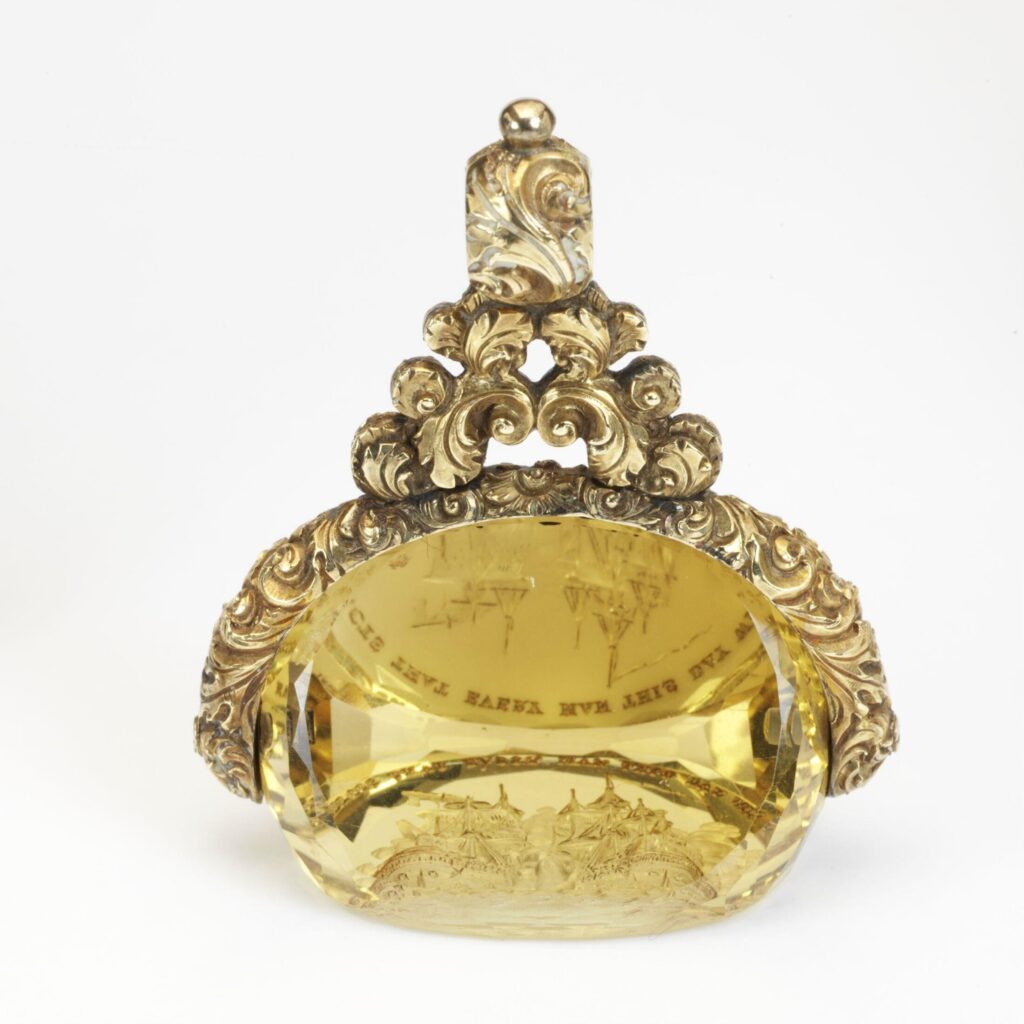
Fob seals held the same function as fobs do today, to easily transport. They were most commonly used by men and attached to a pocket watch. Says the Victoria & Albert Museum of the above:
“Seals were functional as well as decorative items, at a time when letters had to be sealed with wax. The three-sided topaz of this swiveling seal is engraved with a scene of smoke billowing from burning ships at the Battle of Trafalgar of 1805 (when the British under Nelson defeated the French). The inscription reads ‘ENGLAND EXPECTS THAT EVERY MAN THIS DAY WILL DO HIS DUTY’. The words were engraved in reverse so that they would be the right way round on the sealing wax. The deeply chased scrolls and flowers of the gold mount are typical of the Rococo Revival of the early 19th century.”
Signet rings
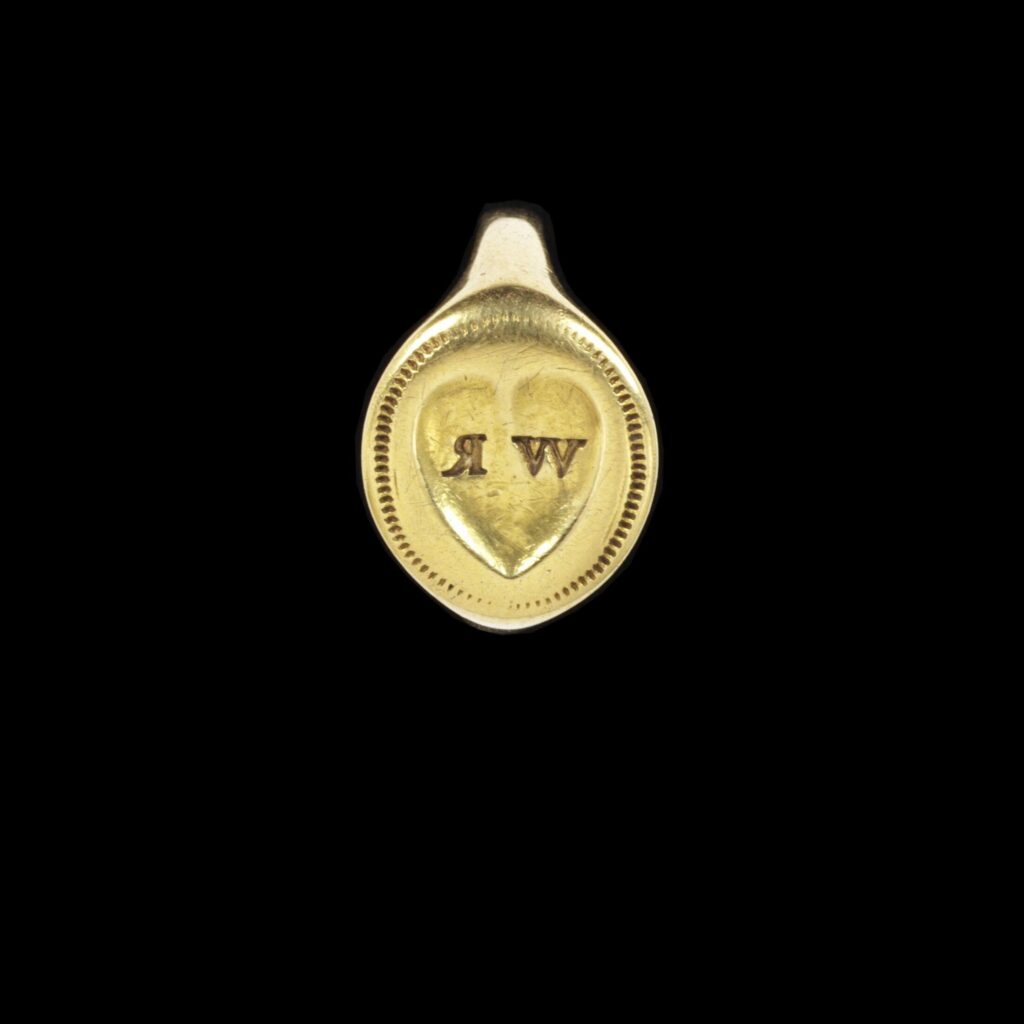
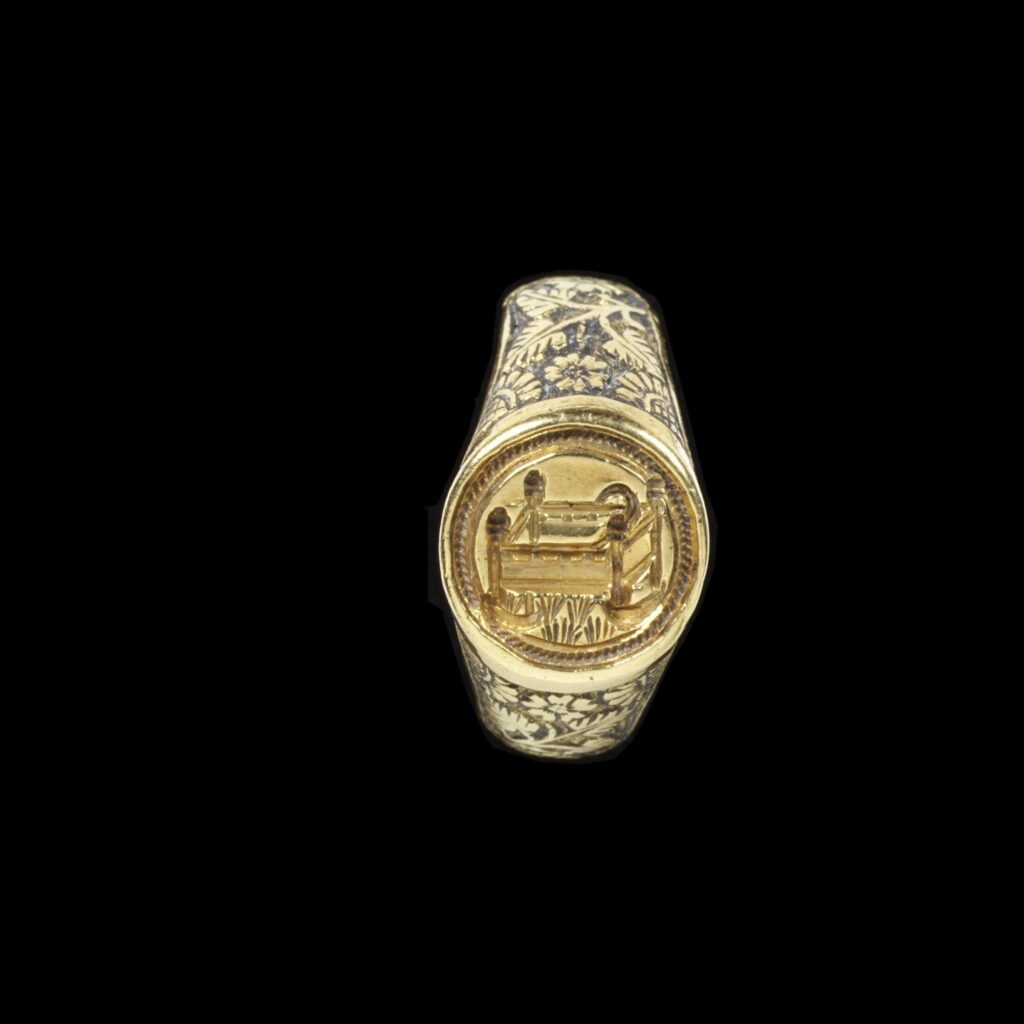
The V&A Museum says of the above ring:
This ring would have been used as a signet, pressed into hot wax to seal a letter or packet. Personal seals (secreta) provided an essential legal safeguard and were used to witness documents such as wills, deeds of gift, loans and commercial documents, personal letters and land indentures.
Signet rings could be engraved with a coat of arms or crest, an initial, a merchant’s mark (a geometric symbol used to mark goods or personal belongings), or a personal symbol. Sixteenth and seventeenth century portraits show signet rings worn on the forefinger or thumb, presumably to make it easy to apply the ring to the wax by turning the hand. They were items of jewellery with a practical function but the use of precious metals and engraved hardstones indicates that they were also signs of status.
The bezel of this ring is engraved with a design which appears to be a cradle whilst the inscription on the back reads ‘my wille were’
Miniature seals
Miniature seals were smaller examples and were meant to also serve as a desktop ornament. They appear to have been most common in the early 1800s.
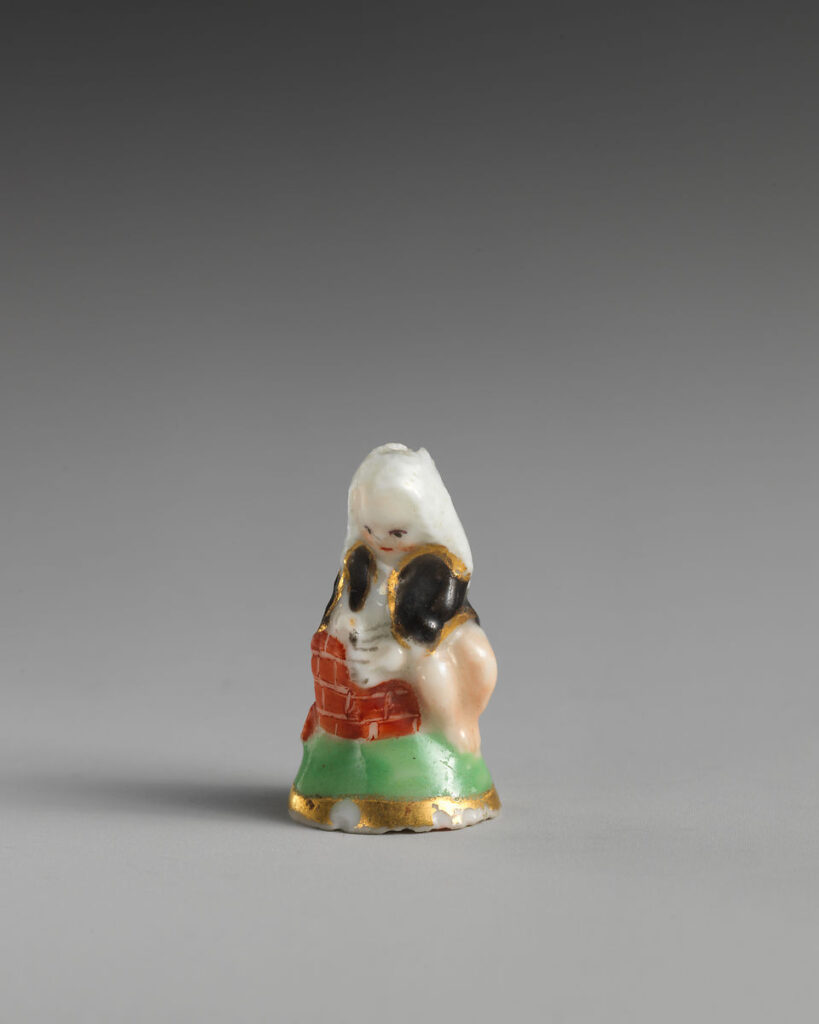
Described as a “Cupid disguised as a barrister.”
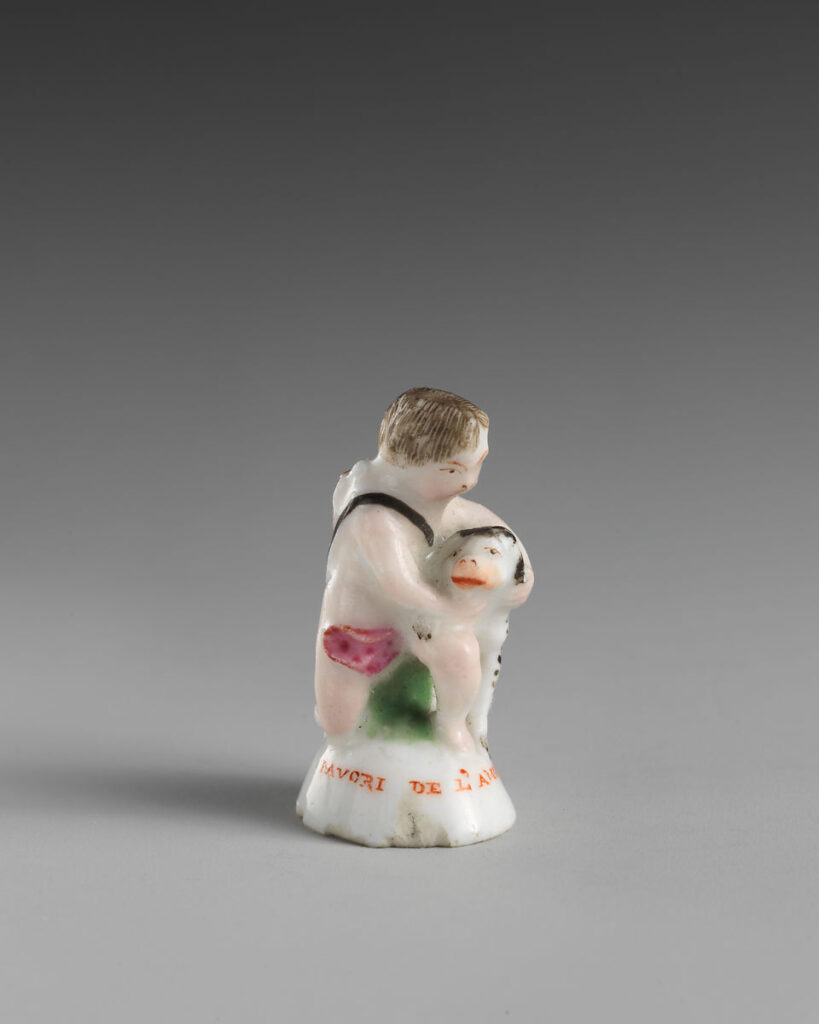
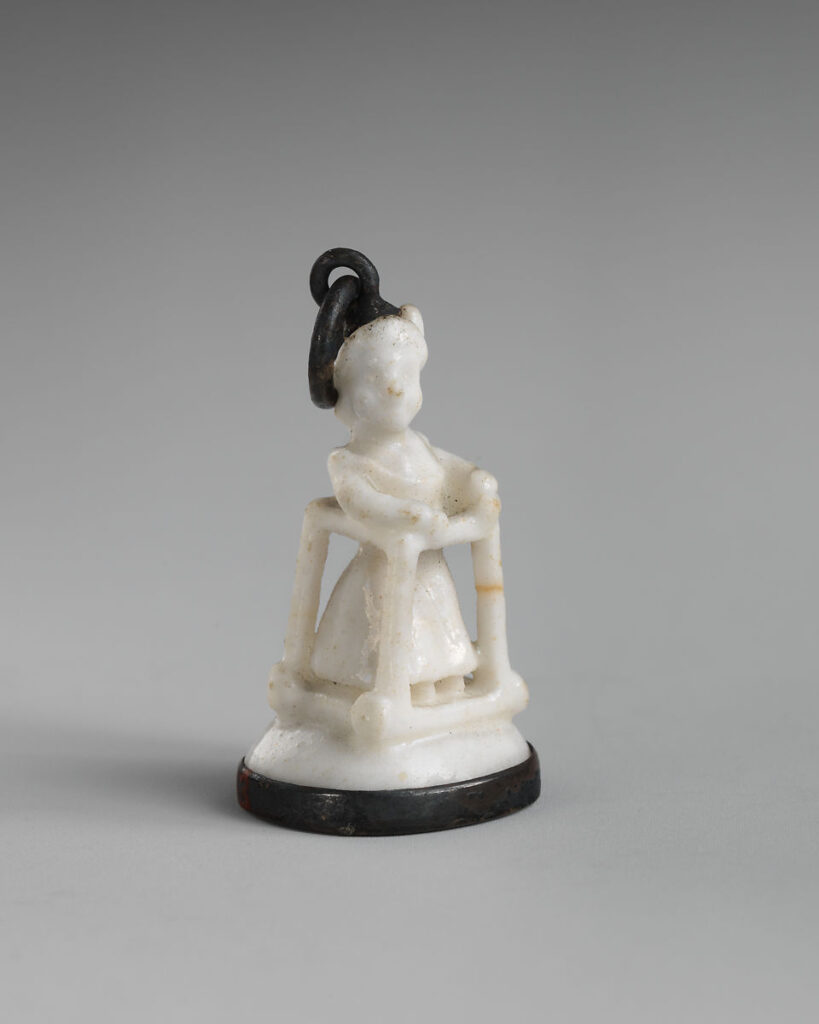
Portable cases
One should always be able to compose a letter on the go! I enjoy the portable case example. They are delicate, convenient, and carried quills, paper, and ink, with the seal being on the bottom end. I suppose they were early examples of pencil cases we still use today.
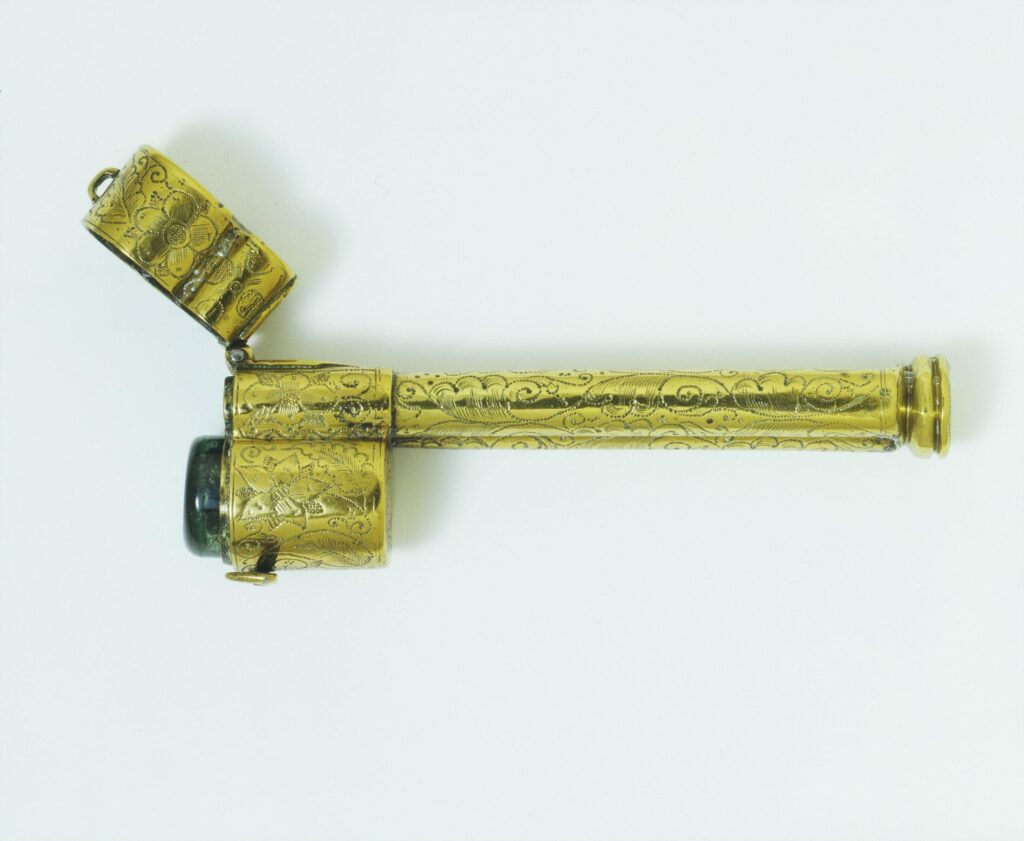
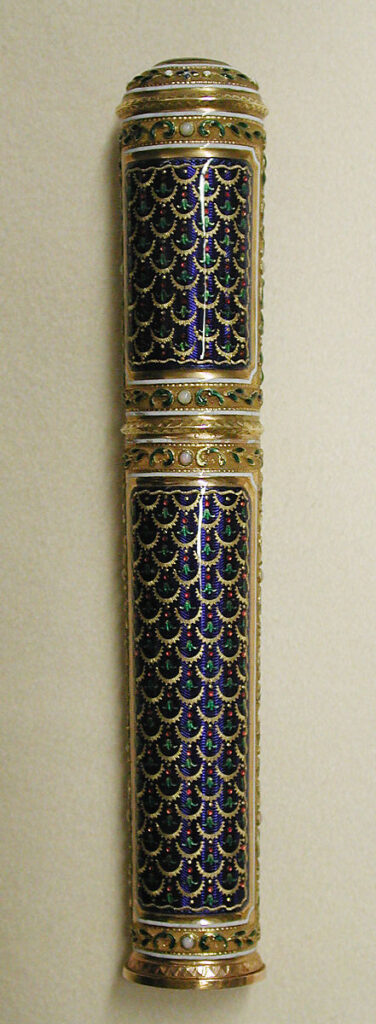
Standard
A “standard” letter seal came with a full-size stamp and handle. They were common from the 1600s to the end of the era of the wax seal.
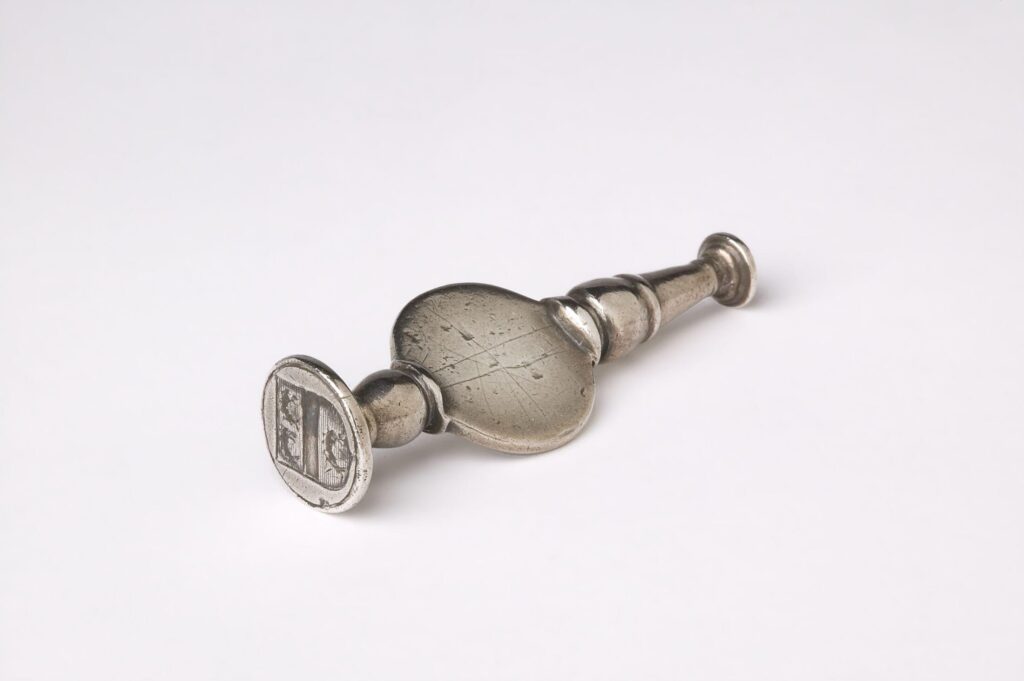
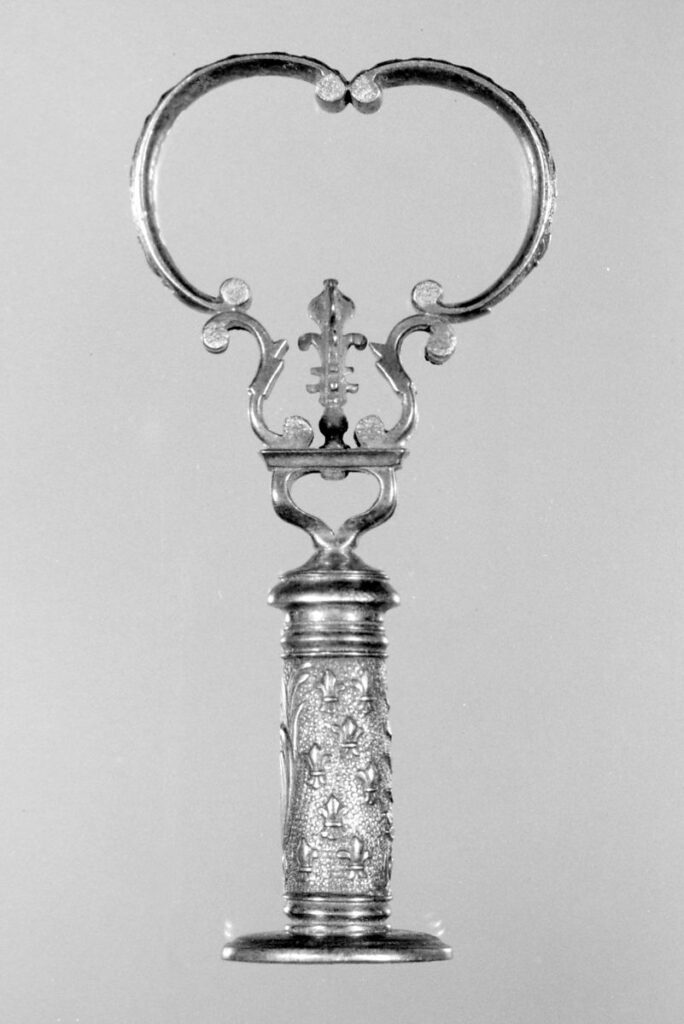
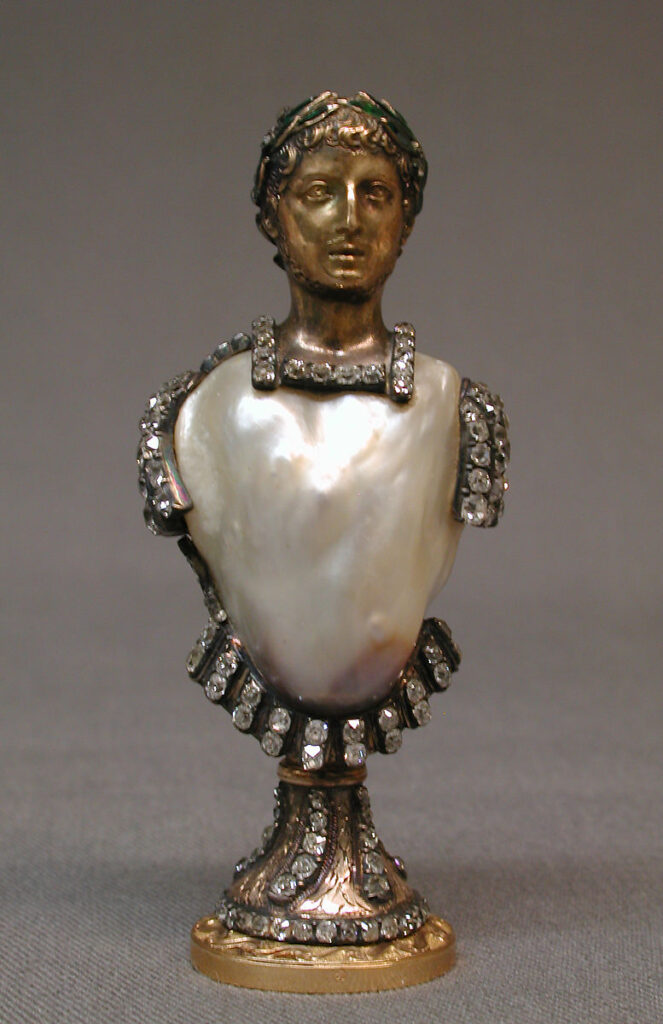
Letter seal etiquette
Although the use of seals to close letters was so widespread, there doesn’t seem to have been much confusion about their proper use, as I found only a handful of references to them in my collection of antique etiquette manuals, even in letter-writing guides. The following passages represent the basic knowledge about how to use them:
“Although the use of the tongue is admirably adapted to the hurry and press of business, it is not, if one thinks of it, a very elegant manner of closing a letter to a friend. A neat little seal of red wax for a gentleman, and of gold, blue, or other fancy color for a lady, will give a much more refined appearance to a note, than simply closing it with adhesive gum. Sealing is an art, however, and will require considerable practice.”
Beadle’s Dime Book of Practical Etiquette for Ladies and Gentlemen, 1859
“Do not use a wafter to fasten a letter to a superior. Either use an adhesive envelope or seal your letter. Fancy-colored wax may be used by ladies.”
The young housekeeper as daughter, wife, and mother: forming a perfect ‘young woman’s companion’. Compiled by the ed. of ‘The Family friend’. 1869
(Wafers were early adhesives/stickers)
“A letter addressed to a person of eminence should have a seal on the envelope; for other letters the ordinary envelope is sufficient.”
How to Write Letters: A Manual of Correspondence, Showing Structure, Composition, Punctuation, Formalities, and Uses of the Various Kinds, 1901
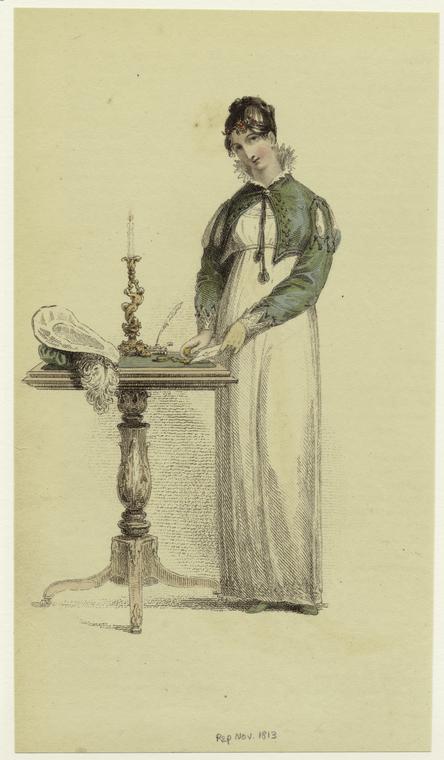
Love letters? You may also enjoy:
Victorian letter-writing rules
Before selfies and text messages were friendship books
How to write a Regency Valentine (according to your profession)

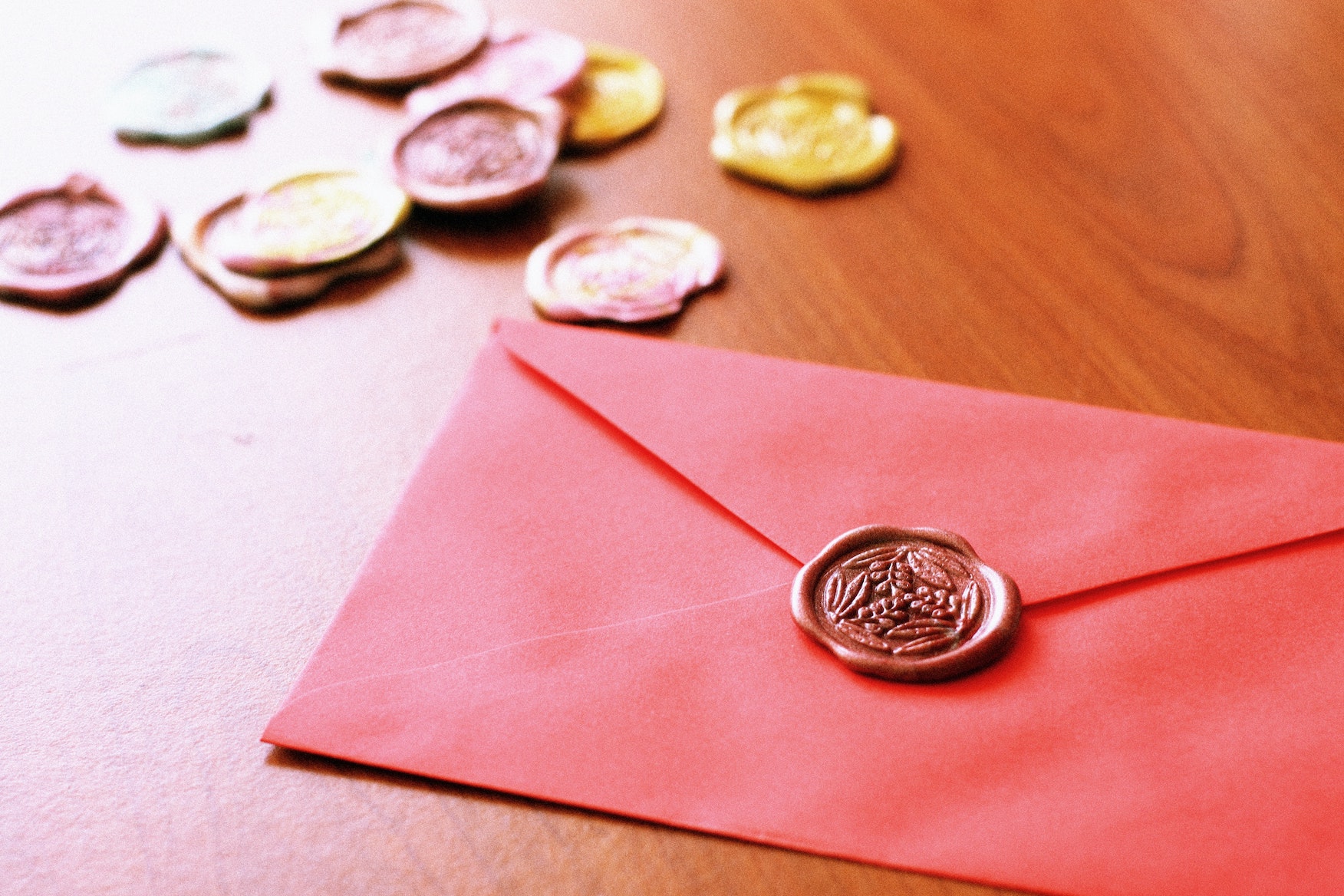


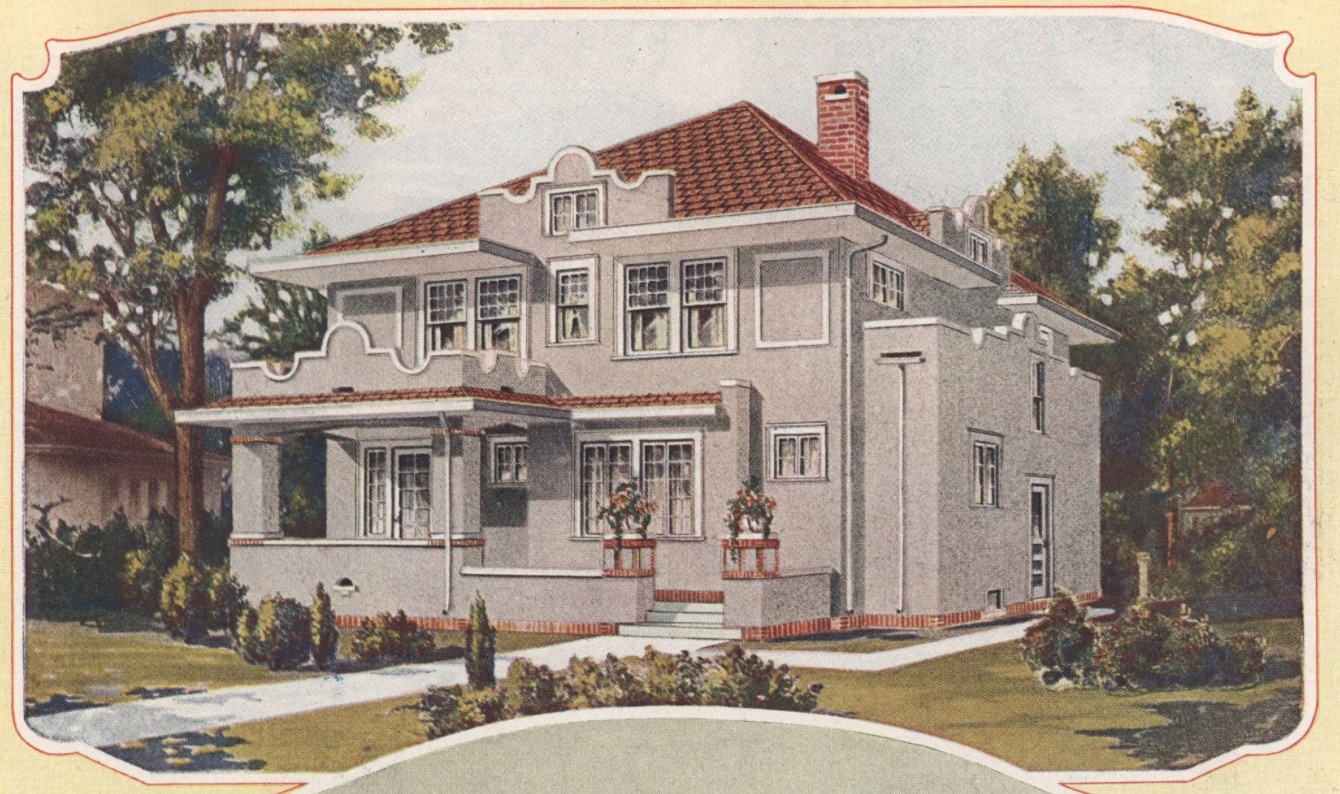









My daughter a few yrs.back mailed me a letter with one of those closers.Guess what I saved it cause it was so unique.
People in Japan still use seals on legal documents – although they are pressed into ink pads so no wax needed.
And different colored seals could denote different things. E.g. a black seal would denote a death.